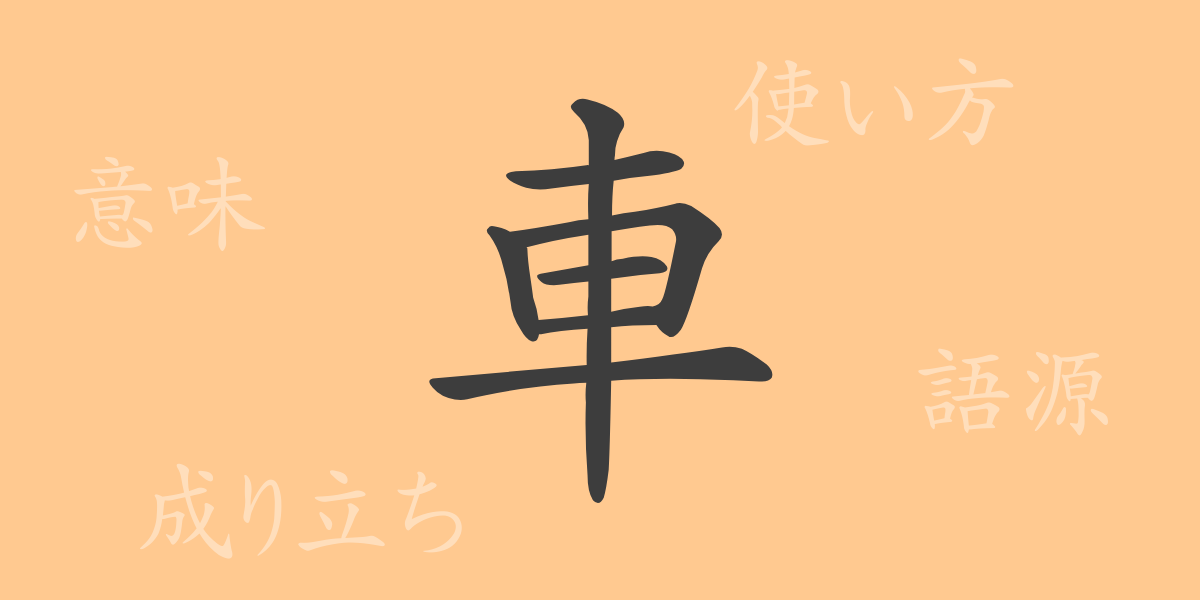The kanji “車(くるま)” is deeply rooted in Japanese culture, carrying a rich history and meaning beyond just being a means of transportation. This article delves into the common kanji “車(くるま),” exploring its origins, diverse uses, idioms, and proverbs to uncover its full charm.
Origins of 車(くるま) (Etymology)
The origins of “車(くるま)” are ancient, with its prototype found in Chinese oracle bone script. The character, depicting two wheels and a central platform, evolved into the current kanji. Given the importance of the wheel as a means of transportation, this character has been closely connected to people’s lives since ancient times.
Meanings and Uses of 車(くるま)
In modern Japan, “車(くるま)” is used to refer to various vehicles, especially automobiles. Additionally, it appears in metaphorical expressions and numerous idioms, highlighting its extensive usage.
Readings, Stroke Count, and Radical of 車(くるま)
“車(くるま)” is one of the most familiar kanji in the Japanese language.
- Readings: The on’yomi (音読み) is “シャ,” and the kun’yomi (訓読み) is “くるま.”
- Stroke count: 7 strokes in total.
- Radical: The radical is 車部(しゃぶ).
Idioms, Phrases, and Proverbs Using 車(くるま)
Numerous idioms, phrases, and proverbs in Japanese include the kanji “車(くるま).” For example, the idiom “車輪の下(しゃりんのした)” describes being overwhelmed by a powerful force. Another proverb, “車には轍がつく(くるまにはわだちがつく),” emphasizes the importance of learning from the experiences of predecessors.
Conclusion on 車(くるま)
The kanji “車(くるま),” with its simple form and diverse meanings, is an indispensable part of Japanese life. It signifies transportation but also plays a crucial role in culture and language. Through this article, we hope you have gained a deeper understanding of this essential kanji.

























